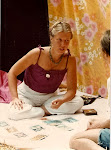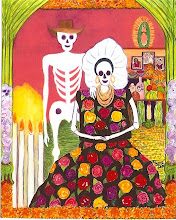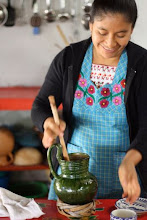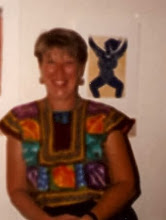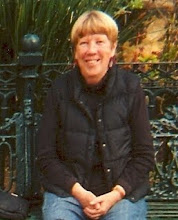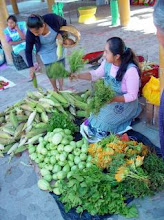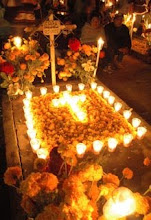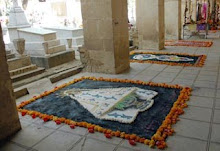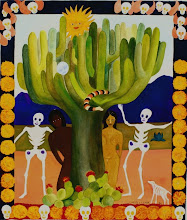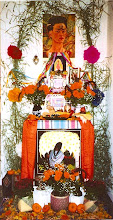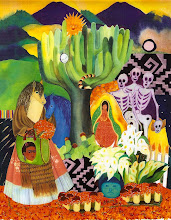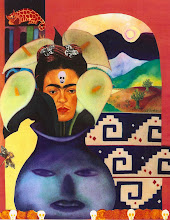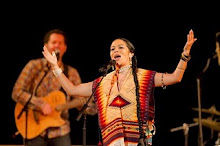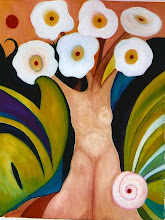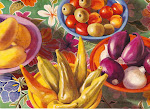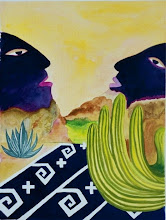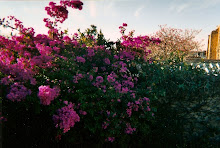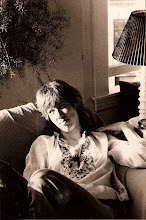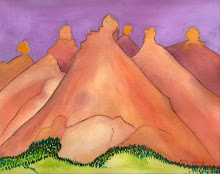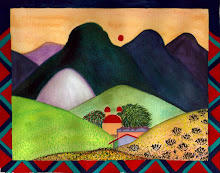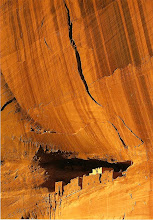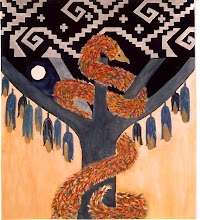
 The first image is my painting, evoking a grand old church, of which there are many in downtown Oaxaca. This one may be in some pueblo in the valley with the magical blue horse hanging out near an anthropomorphic urn with calla lillies. Actually, Templo Santo Domingo was the inspiration for this painting and others in the small group.
The first image is my painting, evoking a grand old church, of which there are many in downtown Oaxaca. This one may be in some pueblo in the valley with the magical blue horse hanging out near an anthropomorphic urn with calla lillies. Actually, Templo Santo Domingo was the inspiration for this painting and others in the small group.The second image (a postcard) is of dancers on the plaza in front of Templo Santo Domingo performing the Dance of the Pineapple. This dance comes from the tropical area of the state of Oaxaca around Tuxtepec. The beautiful young women wear huipiles (handwoven dresses) representing that area. This dance seems to represent young women's puberty dance--presenting themselves to the pueblo (people). The pineapple is the perfect symbol of the matriz.
Dancers gather to celebrate many things in downtown Oaxaca--sometimes for a public show and sometimes for private events, like marriages at Santo Domingo. Oaxaquenos enjoy the colorful folklorico presentations complete with traditional live music from local bands. It is common to see a group of young people practicing dances in El Llano Park. I love the dances, so energetic, sensual, entertaining, vibrant!





